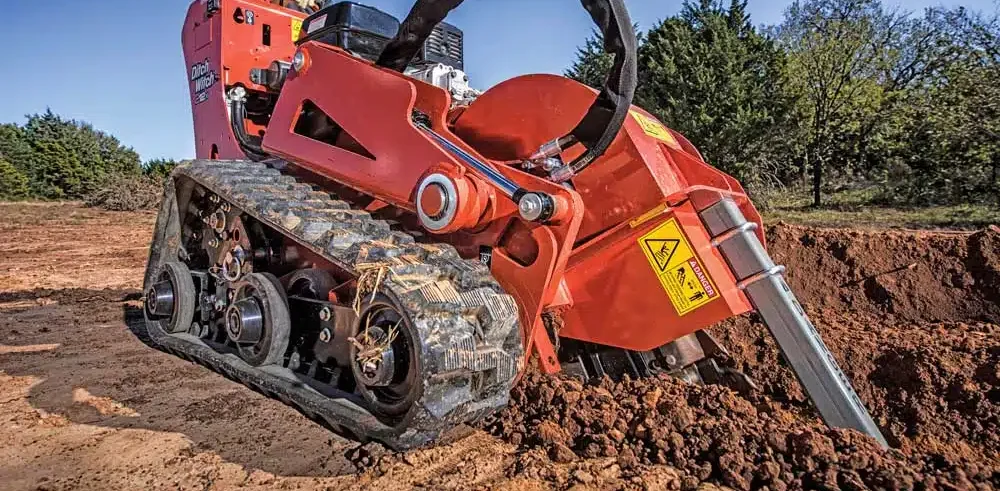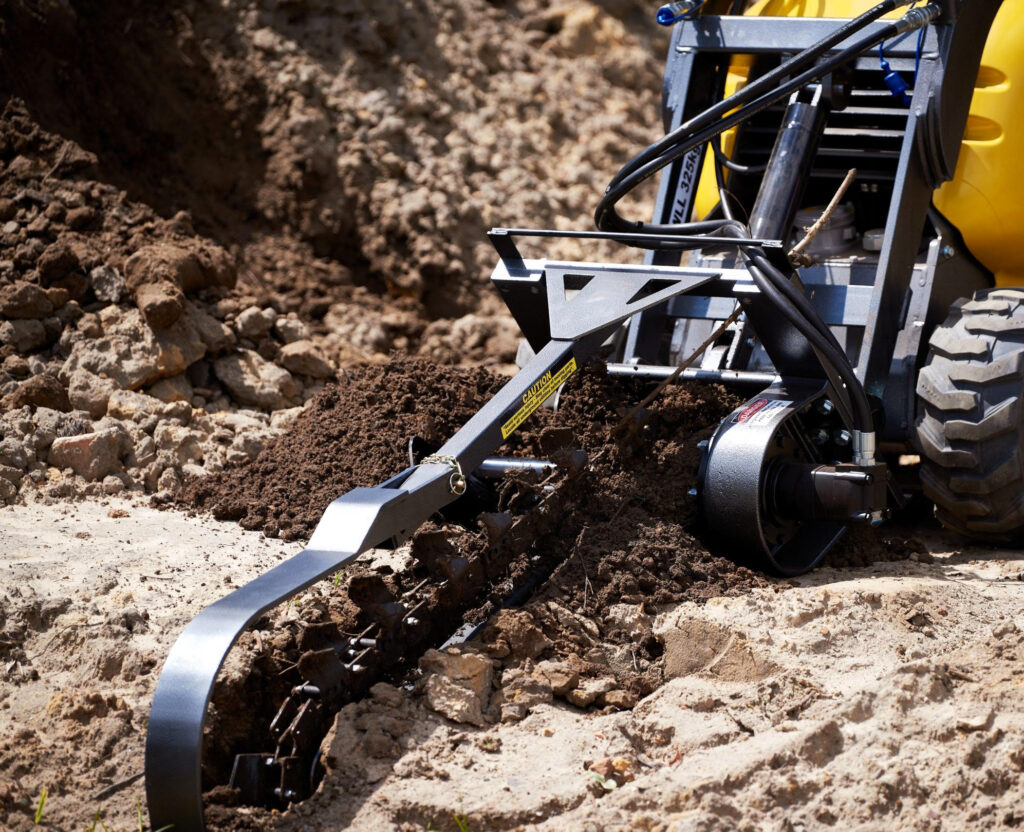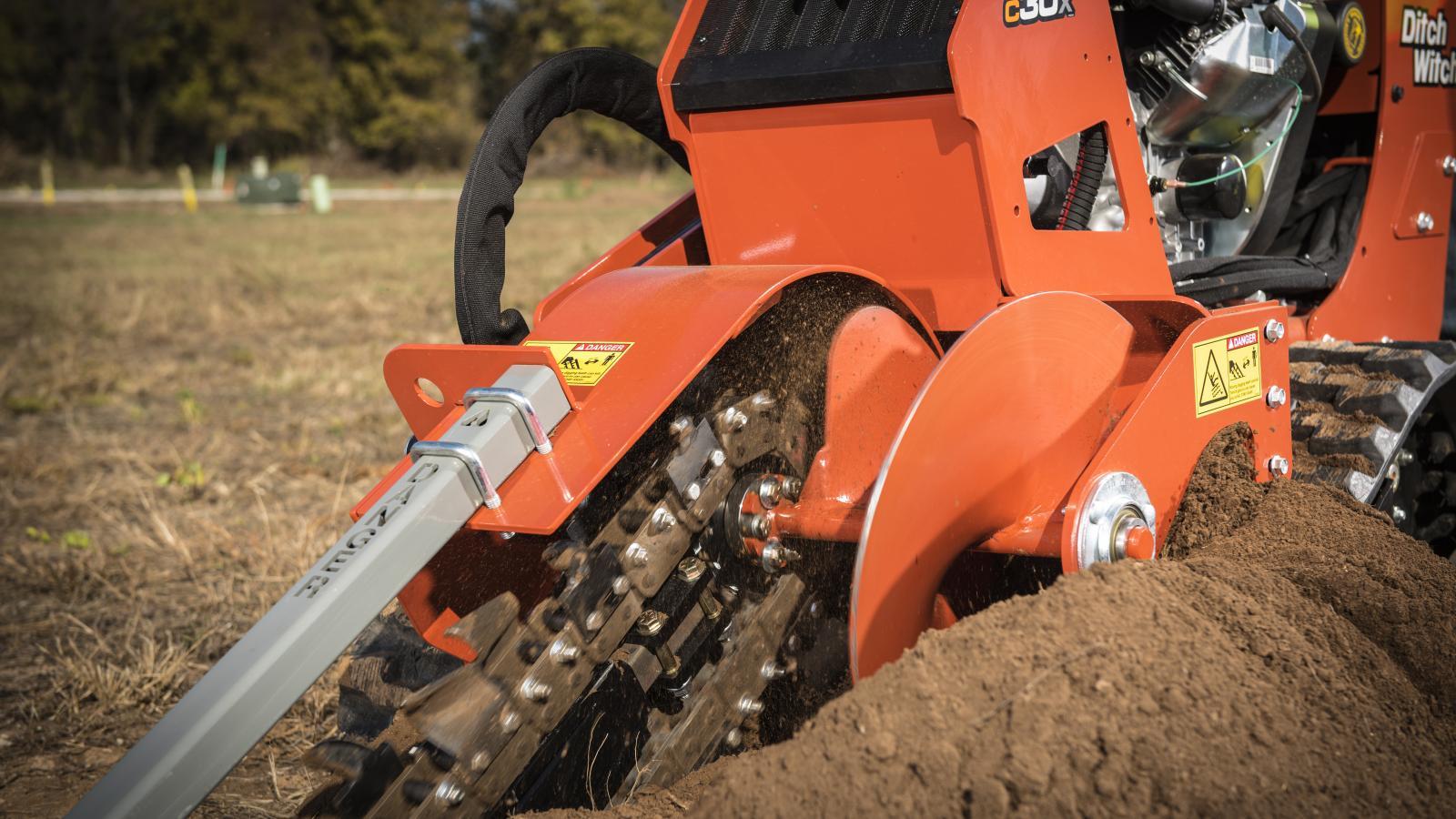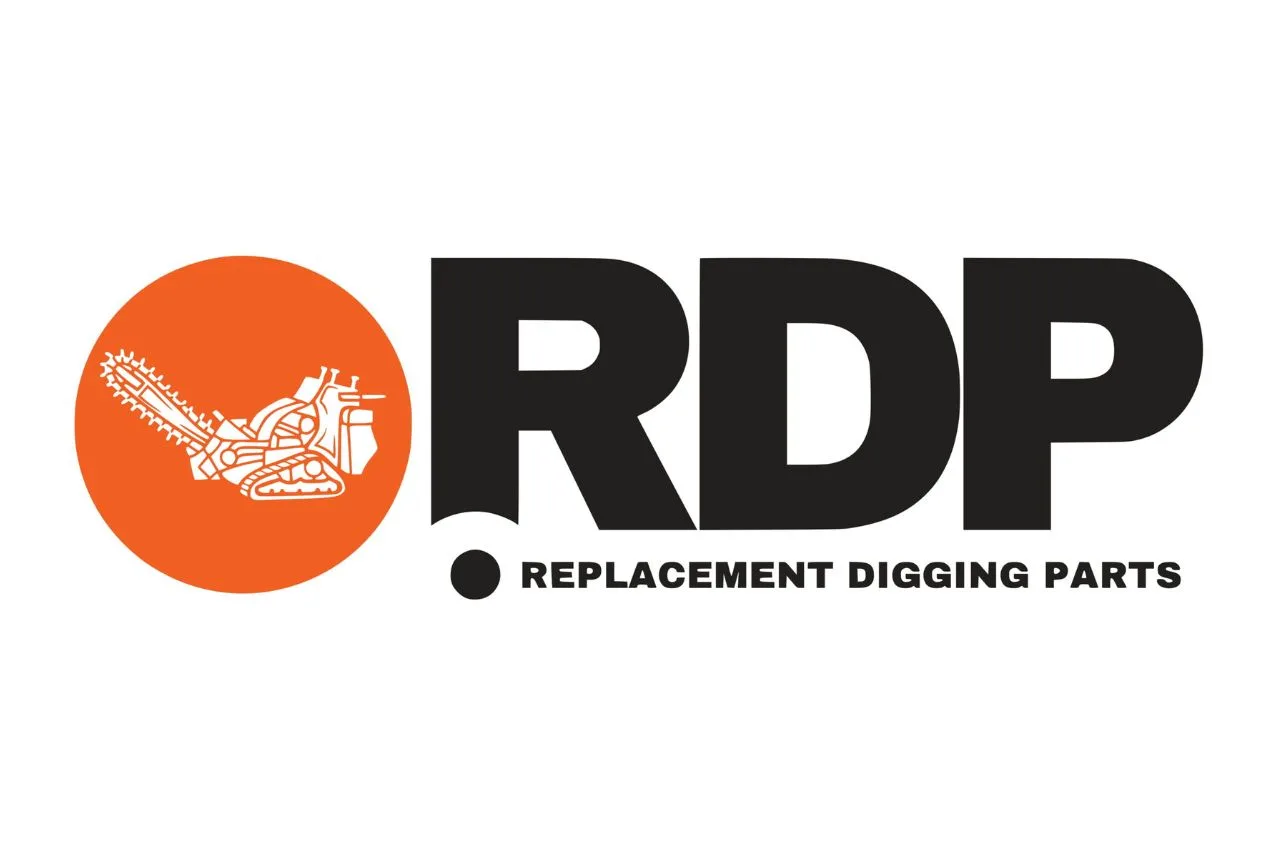Are you struggling to find the right trencher for your digging project? Trenchers are essential tools that enable efficient excavation across various industries. This comprehensive guide will explore different types of trenchers, their diverse applications, and how to choose the right one based on factors like horsepower and project requirements. We’ll also cover safe operation techniques and maintenance practices to extend your trencher’s lifespan. Whether you’re from Vermeer Corporation or an individual contractor, this guide will help you make informed decisions about trencher selection and transport for your specific needs.
Key Takeaways
- Trenchers are essential for creating precise trenches in various industries and applications
- Proper selection of trenchers based on project needs ensures efficient and compliant operations
- Regular maintenance and safety practices are crucial for optimal trencher performance and longevity
- Different types of trenchers cater to specific digging needs and ground conditions
- Accurate record-keeping and professional servicing help extend trencher lifespan and minimize downtime
Understanding Trenchers: The Backbone of Digging Solutions

Trenchers are essential tools in modern construction, playing a crucial role in infrastructure development and maintenance. These specialized machines excel at creating precise trenches for plumbing, utilities, and drainage systems. Understanding the key components of trenchers and how they differ from other excavation equipment is vital for maximizing their efficiency in various digging applications.
The Role of Trenchers in Modern Construction
Trenchers play a vital role in modern construction, offering efficient solutions for various digging applications. These machines excel in creating precise trenches for installing pipes, drainage systems, and utility lines. Trenchers utilize hydraulics to power their cutting mechanisms, enabling them to work through different soil types and compaction levels. Their versatility allows them to be used as standalone units or attached to loaders, making them essential tools for infrastructure development and maintenance projects:
- Excavation for utility installations
- Creating drainage channels
- Laying pipelines for water and gas
- Preparing foundations for structures
- Landscaping and irrigation system installation
Key Components That Make Up a Trencher
Trenchers consist of several key components that work together to create efficient digging solutions. The main body of the trencher, often built on a tractor-like frame, houses the engine and hydraulic systems. The digging chain or wheel, equipped with tough teeth or blades, cuts through various soil types and sand. A boom supports the chain or wheel, while the conveyor system removes excavated material. The clutch mechanism allows operators to engage or disengage the digging components as needed, providing precise control over the equipment’s operation.
How Trenchers Differ From Other Excavation Equipment
Trenchers distinguish themselves from other excavation equipment through their specialized design and efficiency in creating narrow, precise trenches. Unlike excavators that dig wider areas, trenchers excel at cutting long, straight channels, making them ideal for landscape projects and utility installations. Their focused digging approach enhances productivity, allowing for quicker completion of projects compared to general-purpose excavation tools. This efficiency often translates to a worthwhile investment for contractors and businesses frequently engaged in trenching work.
Exploring Various Types of Trenchers for Different Needs

Trenchers come in various types, each designed for specific digging needs and ground conditions. From chain trenchers for deep cuts to wheel trenchers for hard ground, micro trenchers for urban areas, portable trenchers for flexibility, and attachment trenchers for enhancing existing machinery, these tools offer efficient solutions for diverse projects. Understanding their unique features ensures optimal efficiency in lawn care, utility installation, and infrastructure development.
Chain Trenchers for Deep and Precise Cuts
Chain trenchers excel in creating deep and precise cuts, making them indispensable in heavy equipment fleets for construction and telecommunications projects. These powerful machines utilize a robust chain equipped with cutting teeth, driven by a heavy-duty gear system, to excavate trenches up to 30 feet deep. The chain’s design allows for efficient digging through various soil types, including hard clay and rocky terrain, ensuring consistent trench depth and width crucial for utility installations and infrastructure development.
Wheel Trenchers Ideal for Hard Ground Conditions
Wheel trenchers excel in hard ground conditions, offering superior performance for challenging digging projects. These robust machines feature a large, circular cutting wheel equipped with replaceable teeth, enabling efficient trenching through compacted soil, rock, and frozen ground. The wheel design allows for effective material handling, reducing wear on the trencher components and enhancing longevity. Wheel trenchers find applications in various sectors, including agriculture and DIY projects, where their ability to maintain consistent trench depth and width proves invaluable for irrigation systems and utility installations.
Micro Trenchers Suited for Urban Environments
Micro trenchers provide an efficient solution for urban environments where space constraints and minimizing surface disruption are crucial. These compact machines excel at creating narrow ditches in various soil types, including clay and loam, making them ideal for fiber optic cable installation and small-scale utility projects. Equipped with powerful engines and advanced automation features, micro trenchers offer precise control and depth consistency, reducing the need for extensive restoration work in densely populated areas.
Portable Trenchers for Flexibility and Ease
Portable trenchers offer unparalleled flexibility and ease of use for small-scale digging projects. These compact machines excel in creating narrow trenches for irrigation systems, utility lines, and water pipes, making them ideal for residential and light commercial applications. Their lightweight design and maneuverability allow operators to navigate tight spaces effortlessly, while the integrated conveyor system efficiently removes excavated material. Portable trenchers provide a budget-friendly solution for contractors and DIY enthusiasts, delivering professional-grade results without the need for large, expensive equipment:
Attachment Trenchers Enhancing Existing Machinery
Attachment trenchers enhance existing machinery by transforming standard equipment into versatile digging solutions. These adaptable tools enable operators to tackle various terrain types, from concrete roads to soft soil, without investing in dedicated trenching machines. Equipment rental companies often offer attachment trenchers as cost-effective options for contractors working on diverse projects. By leveraging existing machinery, businesses can optimize their equipment fleet and improve project efficiency across different job sites:
Diverse Applications of Trenchers Across Industries

Trenchers serve diverse industries with their specialized digging capabilities. From installing utility lines and creating agricultural irrigation systems to landscaping and construction site preparation, these machines offer efficient solutions. Trenchers, including those with buckets, also play a crucial role in mining operations for material removal, showcasing their versatility across various sectors.
Installing Utility Lines: Power, Water, and Communication
Trenchers excel in installing utility lines for power, water, and communication networks. These machines create precise trenches for laying cables, pipes, and conduits, ensuring efficient infrastructure development. Contractors rely on trenchers to minimize surface disruption and complete projects quickly, reducing costs and environmental impact. The ability of trenchers to cut through various soil types and maintain consistent trench depth makes them indispensable for utility companies and construction firms.
Agricultural Projects: Irrigation and Drainage Systems
Trenchers play a crucial role in agricultural projects, particularly in the installation of irrigation and drainage systems. These machines efficiently create precise trenches for laying pipes and drainage tiles, ensuring optimal water management in fields. Farmers and agricultural contractors rely on trenchers to improve crop yields and soil health by implementing effective irrigation and drainage solutions:
- Installing subsurface drip irrigation systems
- Creating drainage channels for excess water removal
- Laying pipes for center pivot irrigation systems
- Implementing tile drainage networks for soil moisture control
- Excavating trenches for water supply lines to livestock facilities
Landscaping Endeavors: Creating Edges and Borders
Trenchers play a vital role in landscaping endeavors, particularly in creating precise edges and borders. These machines efficiently cut clean, straight lines for flower beds, walkways, and lawn boundaries, enhancing the overall aesthetic appeal of outdoor spaces. Landscape professionals utilize trenchers to install edging materials, such as plastic or metal strips, ensuring a polished and well-defined look for gardens and lawns.
Laying Foundation Work in Construction Sites
Trenchers play a crucial role in laying foundation work at construction sites, offering efficient solutions for creating precise trenches for footings and utility lines. These machines excel at excavating narrow, deep channels in various soil types, ensuring accurate depth and width for foundation elements. Construction teams utilize trenchers to streamline the foundation process, reducing labor costs and project timelines while maintaining high-quality results. The versatility of trenchers in foundation work extends to:
- Excavating trenches for concrete footings
- Creating channels for foundation drainage systems
- Preparing sites for slab-on-grade foundations
- Digging trenches for perimeter insulation installation
- Establishing utility corridors within the foundation area
Mining Operations: Efficient Material Removal
Trenchers contribute significantly to mining operations, offering efficient material removal solutions. These machines excel at creating precise cuts in various soil types and rock formations, enabling miners to access valuable minerals and ores. Mining companies utilize specialized trenchers equipped with heavy-duty chains or wheels to excavate overburden and create access paths for larger equipment, streamlining the extraction process and improving overall productivity.
Choosing the Right Trencher for Your Specific Project
Selecting the right trencher for a project requires careful consideration of several factors. This section explores assessing soil types, determining trench dimensions, matching features to project demands, evaluating purchase versus rental options, and considering environmental impact. Understanding these aspects ensures optimal trencher selection for efficient and compliant project execution.
Assessing Soil Types and Ground Conditions
Assessing soil types and ground conditions is crucial for selecting the appropriate trencher. Contractors must evaluate factors such as soil composition, moisture content, and the presence of rocks or underground obstructions. This assessment helps determine the required digging power and chain or wheel type needed for optimal performance. Proper soil analysis ensures efficient trenching operations and minimizes equipment wear, ultimately leading to cost-effective project execution.
Determining Required Trench Dimensions
Determining required trench dimensions is a critical step in selecting the appropriate trencher for a project. Contractors must consider the depth and width specifications dictated by local building codes, utility requirements, or project plans. These dimensions directly influence the choice of trencher, as different models offer varying digging capacities. Accurate assessment of trench dimensions ensures efficient excavation and compliance with project specifications, ultimately leading to successful project completion and client satisfaction.
Matching Trencher Features With Project Demands
Matching trencher features with project demands involves selecting equipment that aligns with specific job requirements. Contractors must consider factors such as digging depth, chain or wheel type, and hydraulic power to ensure optimal performance. For instance, projects requiring deep trenches in rocky soil may necessitate a heavy-duty chain trencher with high horsepower, while urban utility installations might benefit from a compact wheel trencher for precision and maneuverability.
Weighing Purchase Versus Rental Options
Contractors must carefully weigh the options of purchasing or renting trenchers based on project frequency, duration, and budget constraints. Purchasing a trencher offers long-term cost savings and equipment availability for companies with regular trenching needs. However, renting provides flexibility for occasional projects, access to the latest models, and eliminates maintenance responsibilities. Companies should analyze their project pipeline and financial capabilities to determine the most cost-effective approach for their specific situation.
Considering Environmental Impact and Compliance
Considering environmental impact and compliance is crucial when selecting a trencher for a project. Contractors must choose equipment that meets local regulations for noise levels, emissions, and soil disturbance. Modern trenchers often feature eco-friendly designs, such as fuel-efficient engines and reduced hydraulic fluid leakage, to minimize environmental impact. Compliance with environmental standards not only ensures legal operation but also promotes sustainable construction practices and enhances a company’s reputation in the industry.
Operating Trenchers Safely and Effectively

Operating trenchers safely and effectively requires thorough preparation and adherence to best practices. This section covers essential aspects of trencher operation, including site preparation, safety gear, trenching techniques, hazard avoidance, and problem-solving on-site. Understanding these elements ensures efficient and secure trenching operations across various projects.
Preparing the Site Before Trenching Begins
Preparing the site before trenching begins is crucial for safe and efficient operations. Operators must conduct a thorough site survey to identify potential hazards such as underground utilities, rock formations, or soil variations. Marking the trench path and establishing a clear work zone helps prevent accidents and ensures precise trenching. Proper site preparation also includes addressing soil moisture levels and removing obstacles that could impede trencher movement or compromise safety.
Essential Safety Gear for Trencher Operation
Operators must equip themselves with essential safety gear when operating trenchers to minimize risks and ensure compliance with safety regulations. Proper personal protective equipment (PPE) includes hard hats, safety glasses, hearing protection, and steel-toed boots. High-visibility clothing enhances operator visibility, particularly in low-light conditions or busy work sites. Operators should also wear gloves to protect against cuts and abrasions when handling trencher components or debris:
- Hard hat for head protection
- Safety glasses to shield eyes from debris
- Hearing protection to guard against loud equipment noise
- Steel-toed boots for foot protection
- High-visibility clothing for improved operator visibility
- Gloves to protect hands during equipment handling
Techniques for Efficient and Straight Trenches
Achieving efficient and straight trenches requires proper techniques and attention to detail. Operators should use guide strings or laser systems to maintain a straight line, adjusting the trencher’s position as needed. Consistent speed and depth control are crucial for uniform trenches, while periodic checks ensure accuracy. For optimal results, operators should consider soil conditions and adjust the trencher’s settings accordingly:
Avoiding Underground Hazards and Obstacles
Avoiding underground hazards and obstacles is crucial for safe trencher operation. Operators must conduct thorough utility locates and verify the accuracy of utility maps before trenching begins. They should use ground-penetrating radar or other advanced detection technologies to identify unmarked obstacles. When working near known utilities, operators should employ hand digging or vacuum excavation techniques to safely expose and confirm their locations, minimizing the risk of damage and ensuring worker safety:
Responding to Operational Challenges on Site
Operators must be prepared to respond swiftly and effectively to operational challenges on site. When encountering unexpected soil conditions or obstructions, they should adjust trencher settings or switch to alternative digging methods. Equipment malfunctions require immediate attention, with operators following proper troubleshooting procedures or contacting maintenance teams for support. By maintaining clear communication with the project team and having contingency plans in place, operators can minimize downtime and ensure project continuity despite unforeseen challenges.
Maintenance Practices to Extend Trencher Lifespan
Proper maintenance practices are crucial for extending trencher lifespan and ensuring optimal performance. This section covers daily inspection routines, regular cleaning procedures, timely part replacements, accurate record-keeping, and professional service checks. By implementing these practices, operators can minimize downtime, reduce repair costs, and maximize trencher efficiency across various projects.
Daily Inspection Routines for Optimal Performance
Daily inspection routines are essential for maintaining optimal trencher performance and extending equipment lifespan. Operators should conduct thorough visual checks of critical components, including the digging chain or wheel, hydraulic systems, and engine, before each use. These inspections help identify potential issues early, preventing costly breakdowns and ensuring safe operation. Regular monitoring of fluid levels, such as engine oil and hydraulic fluid, enables timely top-ups and helps maintain system integrity.
Regular Cleaning to Prevent Build-Up and Damage
Regular cleaning prevents build-up and damage in trenchers, extending their lifespan and maintaining optimal performance. Operators should implement a thorough cleaning routine after each use, removing dirt, debris, and excess material from the digging chain or wheel, conveyor system, and engine compartment. This practice prevents abrasive particles from causing premature wear on critical components and ensures proper heat dissipation for the engine and hydraulic systems. Operators should pay special attention to cleaning areas prone to material accumulation, such as the boom and chain guide, to prevent corrosion and maintain smooth operation:
Replacing Worn Parts Before They Fail
Replacing worn parts before they fail is crucial for maintaining trencher performance and preventing costly breakdowns. Operators should regularly inspect high-wear components such as digging teeth, chains, and sprockets, replacing them when signs of wear become evident. This proactive approach minimizes unexpected equipment failures, reduces downtime, and ensures consistent trenching quality across projects. By implementing a systematic replacement schedule based on manufacturer recommendations and site-specific conditions, companies can optimize their trencher maintenance programs and extend equipment lifespan.
Keeping Accurate Maintenance Records
Keeping accurate maintenance records is essential for extending trencher lifespan and optimizing performance. Operators should document all maintenance activities, including routine inspections, part replacements, and repairs, in a centralized system. These records help track equipment history, identify recurring issues, and forecast future maintenance needs. By analyzing this data, companies can make informed decisions about equipment upgrades, refurbishments, or replacements, ultimately reducing downtime and maximizing trencher efficiency.
Scheduling Professional Service Checks
Scheduling professional service checks is crucial for maintaining trencher performance and longevity. These specialized inspections, conducted by trained technicians, can identify potential issues that may be overlooked during routine maintenance. Regular professional servicing ensures that complex systems, such as hydraulics and electronic controls, are thoroughly examined and calibrated to manufacturer specifications. By adhering to a consistent schedule of expert evaluations, operators can minimize unexpected breakdowns, optimize trencher efficiency, and extend the equipment’s operational lifespan.
Conclusion
Trenchers are indispensable tools in modern construction, offering efficient and precise digging solutions for various industries. At Replacement Digging Parts, we understand the importance of selecting the right trencher and maintaining it for maximum performance. From utility installation and agricultural projects to landscaping and mining operations, trenchers streamline excavation processes and enhance productivity. Choosing the right trencher, operating it safely, and implementing proper maintenance practices are crucial for maximizing equipment lifespan and project success. By understanding trencher types, applications, and best practices, contractors and operators can significantly improve their digging capabilities, reduce costs, and deliver high-quality results across diverse projects. For expert advice and premium replacement parts, Contact Replacement Digging Parts today.




